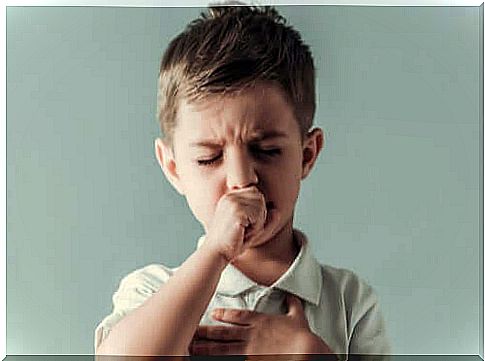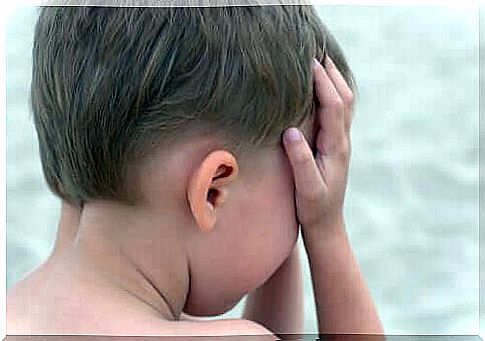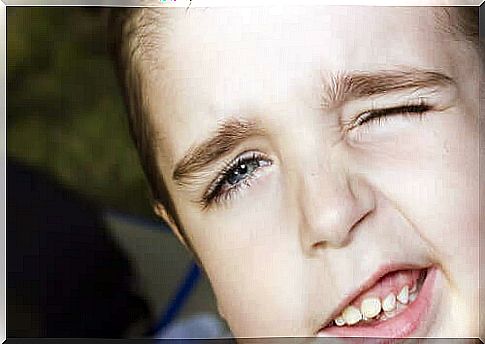Learn About Childhood Tics

Tics are rapid, sudden motor manifestations that result from the involuntary contraction of one or more muscle groups. They are involuntary, stereotyped, recurrent, unpredictable, non-rhythmic and temporally controlled by will. Childhood tics are amplified by stress or anger, and can be mitigated by distraction or concentration.
Tics in childhood are the most frequent movement disorder in pediatrics. The premonitory impulse appears to be the involuntary part of a tic, and often the movement is performed to alleviate the impulse.
However, younger children with rapid tics describe them as sudden without much warning or voluntary participation.

Childhood tics: age of onset and course
Tics usually start between 4 and 7 years of age. For most children, the first tics are repetitive blinking, sniffing, throat clearing, or coughing. They are more frequent in men than in women, with a ratio of 3 to 1.
Tics vary considerably in severity and frequency. Many children with minor, transient tics between 4 and 6 years of age do not receive medical attention. In approximately 55% to 60% of young people, tics will be minimal by late adolescence or early adulthood.
In another 20% to 25%, tics become infrequent but occasional. In about 20%, the tics continue into adulthood (some of which even report getting worse).
Clinical characteristics of tics
There are certain characteristics that define these motor manifestations. Are the following:
- Tics are aggravated by anxiety, tiredness, illnesses, emotions and excessive screen time.
- Tics tend to diminish when the child is engaged in a cognitively demanding and interesting task.
- Exercising reduces tics, especially during physical activity itself.
- Tics do not interfere with important actions or lead to falls or injuries. In any presentation of these tics (also called blocking tics), the physician should be made aware of the possibility of a functional component.
- Remarkable differences can be observed when tics are filmed.
- They usually accompany personality disorders, in addition to being present in dysfunctional families.
- They may be accompanied by a certain feeling of pleasure that is expressed on the face, despite the complexity of the movements.
- Feeling of not being able to suppress them.
- They do not have a premonitory feeling.
classification of tics
Tics are classified into motor or vocal and into simple or complex. Simple ones are manifested by sudden movements or brief, repetitive sounds.
Complex motor tics are sequentially but inadequately coordinated movements. For example, repeatedly shaking your head, repeating other people’s gestures (ecopraxia) or making obscene gestures (copropraxis).
Complex vocal tics are characterized by elaborate sound productions, but placed in an inadequate environment. An example of this would be syllable repetition, blocking, repetition of your words (palilalia), repetition of words heard (ecolalia) or pronunciation of obscene words (coprolalia).
How tics are classified in DSM-5
- Transient tic disorder : motor or vocal tics, or both, that occur for less than a year.
- Chronic tic disorder : single or multiple motor tics or vocal tics present for more than a year.
- Tourette’s Syndrome (TS): multiple motor tics along with vocal tics lasting a year; they follow an increasing pattern and do not necessarily need to be present simultaneously.
Comorbidity of tics in childhood
In children with tics, there is a general presence of impulse control difficulties, subtle differences in neuropsychological and motor functioning, in addition to a high rate of psychiatric or developmental comorbidities such as ADHD (30% to 60%), compulsions (30 % to 40%), anxiety (25%), disruptive behavior (10% to 30%), mood changes (10%), obsessive-compulsive disorder (5% to 8%), autistic spectrum disorder (5%) and motor coordination difficulties. Some children also have episodic anger.
Etiology
Tics have a complex multigenetic etiology and are highly heritable. The concordance between monozygotic twins is 87%.
In the past, tics were considered related to behavior or stress, and were called “nervous habits” or “contractions”, now it is known that tics are neurological movements that can be aggravated by anxiety, but this is not causal .
The underlying mechanisms involving several neural networks in the brain, including the cortex and ganglia of the base (frontal-striatal-thalamic circuit) but also involve other areas of the brain such as the limbic system, cerebellum , and midbrain.
Abnormalities in interoceptive awareness and central sensorimotor processing have also been described.
Treatment of tics in childhood: behavioral interventions
Behavioral interventions include several techniques, although the specific treatment to be followed by each child depends on the previous evaluation carried out, the response to the treatment and the incidences that arise during it (Bados, 2002).
Habit reversal therapy (HRT) and exposure and response prevention (ERP) are evidence-based interventions for tics. TRH and ERP will reduce the combined severity and frequency scores (Yale Global Tic Severity Index) from 40% to 50%.
habit reversal treatment
The habit reversal treatment proposed by Azrin (Azrin & Peterson, 1988) involves teaching the patient to recognize the precognitive impulse and to perform an action called the competitive response, which reduces the possibility of his irritating tic occurring.
It includes 11 main techniques organized into five phases:
- Consciousness. It involves the perception of stimuli and situations that precede the onset of tic.
- Detailed description of the tick and training to do it voluntarily.
- Self-observation training to detect tic when it occurs.
- Early detection, training to detect the sensations that precede the performance of the tic.
- Detection of dangerous situations in which the tic is more likely to be triggered.
- relaxation training
- Training to perform a response incompatible with the tic. It is a behavior that must have the following characteristics:
- Prevent tic-specific conduct.
- Being able to keep it for a few minutes
- Produce an increased awareness of the behavior of which the tic consists.
- Be socially acceptable.
- Be compatible with normal activity.
- Strengthen antagonistic muscles to those involved in tic behavior.
- For tics, it usually consists of isometrically tensing the muscles that oppose the movement of the tics.
- Motivation. This phase is aimed at both the patient and the family. Includes three standard motivation techniques:
- Review of the inconvenient aspects implied by the tic.
- Social support. It consists of a person from your personal circle getting involved and assisting in carrying out the procedure.
- Conducting behaviors in public. So that the patient can prove that he can perform the proposed method in public.
- Generalization training. It includes performing exercises in which the patient must imagine himself performing the exercise in dangerous situations identified in phase 1.

Exposure therapy with response prevention
The practice of exposure with response prevention leads to the need for habituation and therapy encourages the patient to feel and tolerate the need for tics (exposure) without performing it (response prevention). In a fixed duration session, the patient is asked to contain his tics and a therapist records how long he can do so.
No answers or accessories are used. Patients have several assists in each session and the period of time they are able to maintain tics progressively increases.
Regularly and systematically performing exposure and response prevention provides the practice of tolerating tic impulses and, over time, the patient’s ability to control them improves.
During the session, the therapist refers to the impulses by asking the patient how strong they are; the suggestion in this action exposes the patient to the anguish of having a tic despite talking about it.
Pharmacological treatment of childhood tics
The decision to use them depends on the nature of the tics and is generally reserved for severe and uncomfortable tics that cause pain or injury. Current evidence points to clonidine (a presynaptic alpha-2 agonist) as the first-line drug.
On the other hand, antipsychotics/antidopaminergics appear to be more effective in adults. Clinical practice supports the good efficacy of Aripiprazole in children.
Benzodiazepines are not used regularly in the treatment of tics, but they are common in an acute and severe clinical situation. They can be used as a way to reduce anxiety in tic attacks, but it is preferable to avoid them as there may be a rebound effect.









